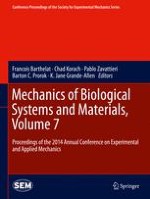2015 | OriginalPaper | Buchkapitel
8. Development of a Microloading Platform for In Vitro Mechanotransduction Studies
verfasst von : S. L. York, J. D. King, A. S. Pietros, B. Zhang Newby, P. Sethu, M. M. Saunders
Erschienen in: Mechanics of Biological Systems and Materials, Volume 7
Aktivieren Sie unsere intelligente Suche, um passende Fachinhalte oder Patente zu finden.
Wählen Sie Textabschnitte aus um mit Künstlicher Intelligenz passenden Patente zu finden. powered by
Markieren Sie Textabschnitte, um KI-gestützt weitere passende Inhalte zu finden. powered by
